The Six On-Screen Adaptations of “The Great Gatsby” and What They Say About the Time and Place They Were Released In.
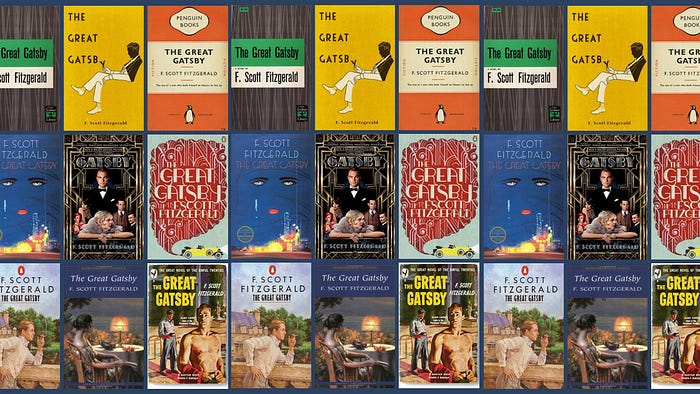
The novel The Great Gatsby written by F. Scott Fitzgerald is a text that has been adapted to the screen six times since it was published in 1925, with the first ever film version produced and released in 1926 with The Great Gatsby, a silent film, directed by Herbert Brenon. This film technically no longer exists, and it is considered “lost” (Auger 46), which is something that has happened frequently to films from this era according to Auger in Representations of Gatsby: Ninety Years of Retrospective (Auger, 2015).
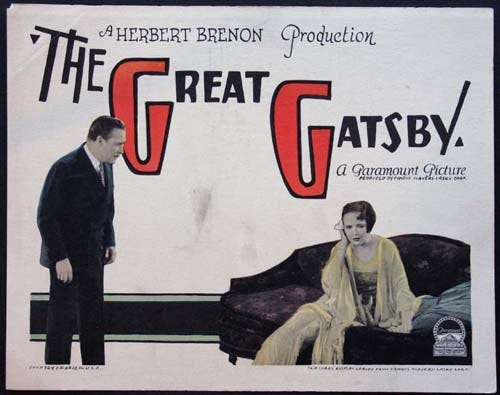
The second adapted film was made in 1949, titled the same as the first adaptation The Great Gatsby, directed by Elliot Nugent. The third adapted film was released in 1974, again titled The Great Gatsby, directed by Jack Clayton. Next was the made-for-TV film The Great Gatsby released in 2000, directed by Robert Markowitz. Shortly afterwards the fifth adaptation was released in 2002, titled G, directed by Christopher Scott Cherot.
Finally and most recently released is the 2013 adaptation The Great Gatsby, directed by Baz Luhrmann. Overall the text has been adapted into films across a timespan of 87 years, and the six films have been released in five different decades, these being the 1920’s, 1940’s, 1970’s, 2000’s and 2010’s.
This wide ranging timeline will naturally reflect very different eras of Hollywood on screen in terms of style, direction, character representations, social commentary and some subtle to significant differences in how technology, urban space and fashion are represented. For all of the six films based on the original novel, the character Jay Gatsby himself has been updated and revised to fit into all of the films’ respective eras in society (Auger iii). Additionally, the adaptations gradually began to subvert representations of gender, race and sexuality in incremental steps, in some ways quite boldly, and in other ways only subtly, but noticeable enough. Further into the 20th century and into the 21st century, there were more daring interpretations of the story, including breaking down some of the identities constructed in the original text and transforming them into some form of a new identity, but with the original heart and soul intact.
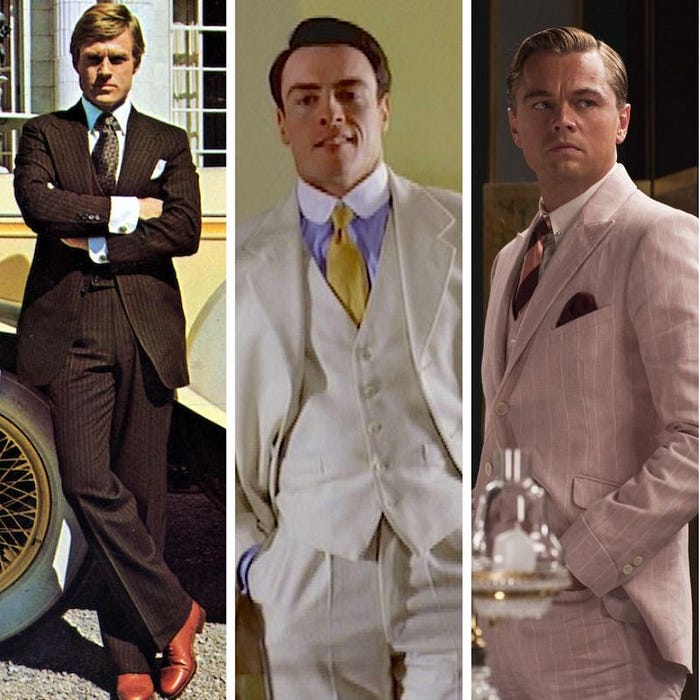
As noted by Lindner and Nicklas in Adaptation and Cultural Appropriation: Literature, Film and the Arts, adaptation is considered to be more more in line with the original text, whereas appropriation is a complete overhaul and reset of the initial story (Linder & Nicklas 5), and in placing this idea in the bounds of the six adaptations of The Great Gatsby it is clear that there have been slightly more straightforward adaptations than appropriations, but the most recent adaptations have shown that there is more of an embrace towards reimagining's of the original story (Linder & Nicklas, 2012).

In the 1926 film, Gatsby is portrayed in a mysterious way and the film itself is very representative of American society at the time, which was in the middle of the Prohibition era (Auger 46). The film also reveals strong capitalist themes at the root of it, with the narrative focused on the idea of a male figure who is able to gain wealth and climb the social ladder by being productive and working incredibly hard. The portrayal of Gatsby as being completely motivated by his love interest of the opposite sex is also very typical for the time it was released (Auger 47). Of course, heteronormativity was the dominant standard at the time, which meant that the attraction between men and women on screen would have been intensified and engrained in the normative gender roles of this period. The idea of the man pursuing the woman he loves at all costs and being the prince-like hero of her life, for example.
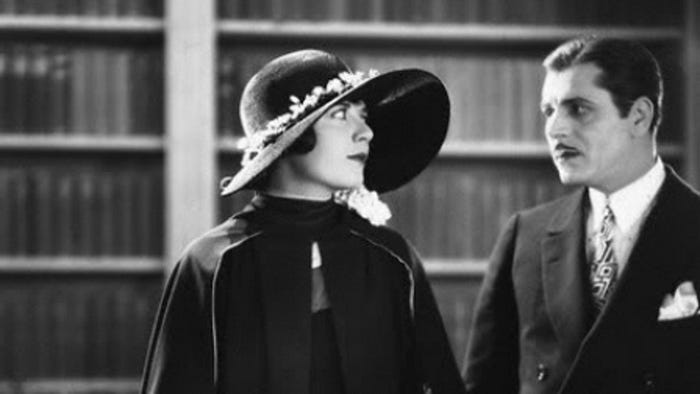
Due to the nature of silent films in the 1920’s, there was a lot that ended up ignored in establishing characters on screen to be fully fleshed out and complex. Gatsby in this adaptation seems to be a moralistic character and does not possess the deceptive and underlying dubiousness of later Gatsby characterizations on screen, and the original novel itself. The character of Daisy Buchanan is also presented as being very moralistic and free of any wrongdoing, and even Tom Buchanan is treated as a decent, mild mannered husband to Daisy (Auger 49). These representations of these particular characters might be insight into the generally conservative culture in the United States and the morals that the authority figures wanted to see ring out in front of audiences who were increasingly flocking to cinemas and theatres to watch films at the time. As stated by Cartmell in A Companion to Literature, Film, and Adaptation, adaptations in the silent film era often based themselves off of famous novels of the time that directors felt confident that the audience would know and understand immediately (Cartmell 2). This is an interesting aspect to consider in the case of this 1926 film adaptation, considering how soon after the novel’s publishing that it was filmed and produced (Cartmell, 2012).

Fast forward two decades to the 1949 film, and the way Gatsby was portrayed is a lot more of a gangster than before (Auger 55). This film also came out in the post World War II era in the United States, and there was a desperate feeling in society to try to establish some sort of moralistic teachings because of all of the tragic events of the previous years in the world. The film was also made during a time of heightened censorship in Hollywood and is wildly different from the original text as well as later adaptations because of the issue in screening taboo content at this time in the United States (Auger 59). However, the way Gatsby was presented in this film shows a much more careful approach to make him more three dimensional and realistically complicated. Gatsby appears as a man who is accepted in society as a respected and upstanding upperclassmen, but there is an air of corruption that lies beneath, and what is eventually exposed as criminality (Auger 65).

There is plenty of reference to illegal alcohol sales and dangerous behaviour in the film and this is appropriate the lens of 1940’s in how society would have felt about the much less moral decade of the 1920’s, the setting of the film, of course (Auger 66). In the film Daisy is represented as an uninteresting character, who is also a disappointing mother figure (Auger 67). This shows definite conservative leanings when considering the two characters of Gatsby and Daisy in this film, and the social commentary surrounding some feeling of necessity for a return to a more virtuous and family focused culture and society.
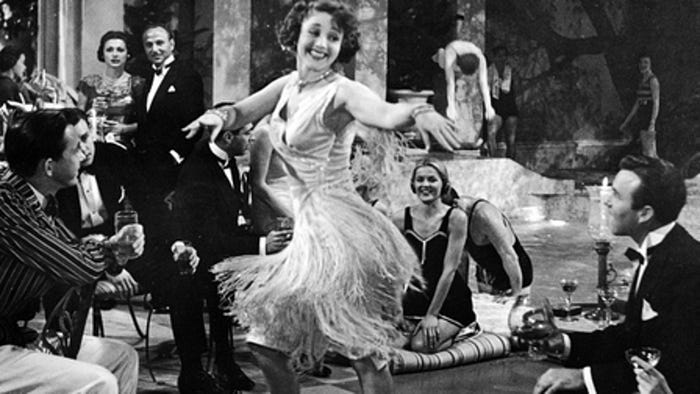
In the 1974 film, almost three decades later, the return to the story of Gatsby marks the first adaptation of the novel following the Golden Era, or Classical Hollywood Era of cinema. The film depicts Gatsby as a person who has been wronged more than anything else, and isn’t to blame fully for his unethical actions, due to the society that surrounds him (Auger 79). The 1970’s were a time when characters were being portrayed as molded and pushed up against by the chaos and corruption of the time, and male protagonists were allowed to be less macho and sure of themselves, and able to show some weakness. Still, Gatsby is treated as a highly unsavory character in the eyes of others, and one that has some very dark secrets being hidden (Auger 90). In this adaptation, Daisy is also shown to be conceited and obsessed with wealth and class. This could have been due to the 1970’s being a time of counterculture and an era that possessed heavy criticism of old money and the conservative institutions in place in the country in previous decades.
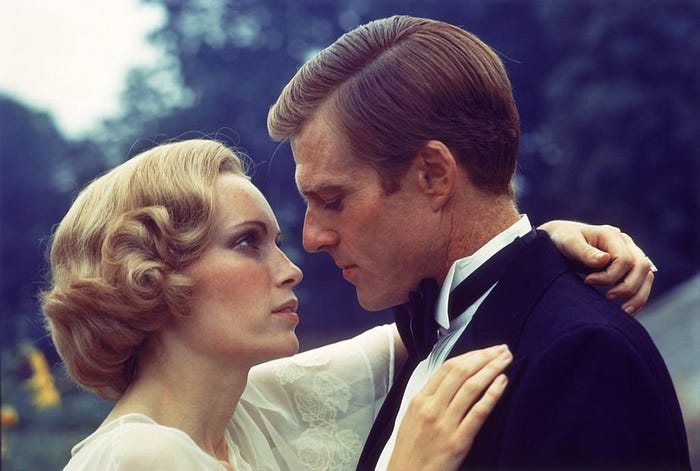
The 2000 adaptation more than three decades later was a film that tried to stay as close to the original novel as possible, but was met with very poor reviews, not unlike the previous films, but hardly struck at anything new or telling of the era it came out in at the start of the new millennium.
The 2002 adaptation, however, did something very interesting by casting all African-American characters, and featured a storyline centering around the Hip-Hop music industry. The film is a very loose adaptation of the original novel, but all of the characters are based on those from the novel, in a contemporary context. This reimagining of the story is one that definitely shook things up and embraced the diversity of the United States and the growing desire for representation of African-Americans on screen in new roles.
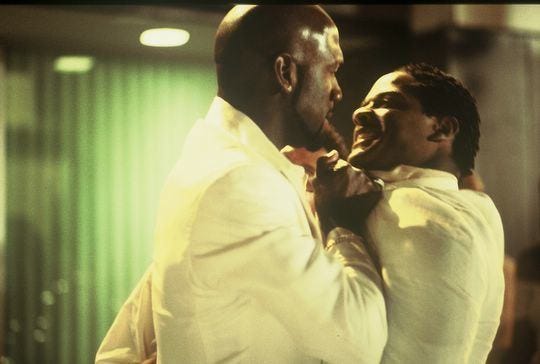
The 2013 adaptation introduced a very new stylistic look for the story and incorporated modern day music into the soundtrack (Auger 110). The characters are incredibly complex in comparison to the previous adaptations, and adds a layer of three dimensionality to every one of these figures. The film, while showcasing era appropriate technology and fashion, fused with contemporary culture and music to bridge both ends of the 86 year lifespan of the Gatsby identity in literature and cinema. Although the film didn’t break any radically new ground in terms of how gender, race and sexuality were presented on screen, the complexity added to all of the main characters helped create a sense of freshness and forward thinking, as well as a much more fantastical and surreal urban space and setting of Long Island and New York City in the 1920’s.

References
Auger, C.A., (2015), Representations of Gatsby: Ninety Years of Retrospective, pp. iii-110, Representations of Gatsby: Ninety Years of Retrospective — ProQuest (mtroyal.ca),
Lindner, O., Nicklas, P., (2012), Adaptation and Cultural Appropriation : Literature, Film, and the Arts, pp. 5, Adaptation and Cultural Appropriation : Literature, Film, and the Arts — Mount Royal University (mtroyal.ca)
Cartmell, D., (2012), A Companion to Literature, Film, and Adaptation, pp. 2, ProQuest Ebook Central — Reader
